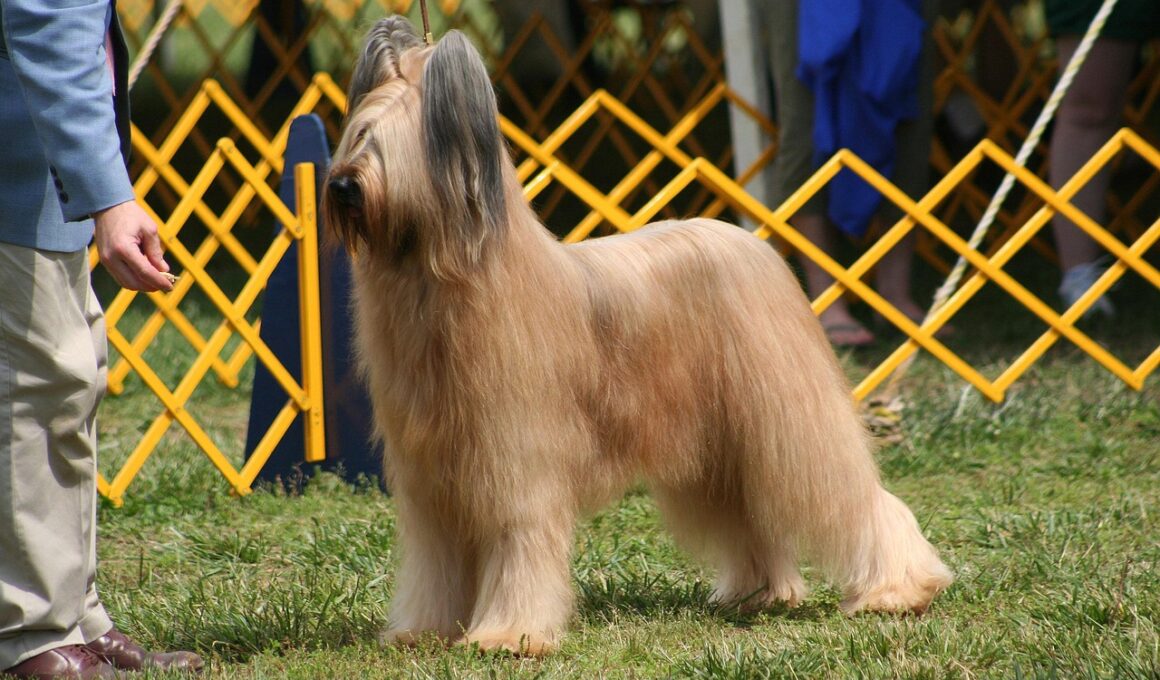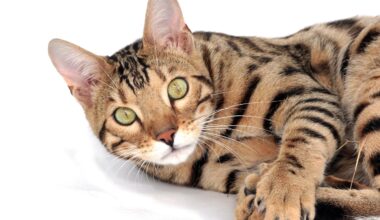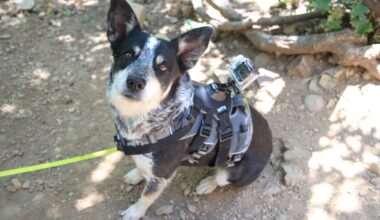Archival Photographs from Classic Dog Shows
Dog shows have a long and rich history that showcases a multitude of breeds, each with its distinct characteristics and unique history. Each photograph captures a moment that tells a story, whether it is a champion dog gracing the ring with elegance or the dedicated handlers behind them. These archival photographs provide us a rare glimpse into the past, demonstrating the evolution of dog breeds and the culture surrounding these events. Exhibitors work tirelessly to prepare their dogs for competition, and the pride they exude is evident in these images. Many classic dog shows have produced renowned champions, making them a significant part of canine history. Through these photos, we can appreciate the craftsmanship of the handlers, the pristine grooming of the participants, and the atmosphere filled with anticipation from the spectators. Moreover, the attached memories become invaluable as they reflect on the hard work and commitment invested in the sport. The archival nature of these images makes them a treasure trove for enthusiasts and historians alike, preserving the legacy of dog show competitions for generations to come, allowing us to celebrate their past while inspiring future enthusiasts.
The first dog shows can be traced back to the 19th century, where the foundations were laid for how we perceive canine competitions today. In the UK, events began to formalize breed standards, leading to the establishment of organizations like The Kennel Club. These early shows set a precedent for the meticulous nature of purebred dog exhibitions, and we owe much of our current practices to these pioneers. Archive photographs from this period offer insight into the types of breeds that were popular and the styles of grooming and presentation used by handlers of the time. The passion for showcasing specific traits in dogs emerged, emphasizing conformation, temperament, and function. Many of these images are now historical artifacts, allowing us to connect with a time when dog owners and breeders began to recognize the value of showcasing dogs in competition. The dedicated participants made means to ensure their canines were in prime condition, often resulting in fame and notoriety for both the dogs and their owners. As we explore these photographs, we gain a deeper understanding of how dog shows have evolved from humble beginnings to a major industry that attracts attendees and participants from across the globe.
The Cultural Impact of Dog Shows
The cultural significance of dog shows extends beyond mere competition. They foster community and camaraderie among dog enthusiasts, allowing for the exchange of knowledge and experiences. Many participants spend years cultivating relationships not just with their own dogs, but also with fellow handlers and breeders. These connections transform competitive events into lively social gatherings where families and friends unite with a shared passion. The archival photographs captured during these shows are invaluable as they reflect the friendships formed through a mutual love of canines. Additionally, the images document the changing societal ideals surrounding dog breeds, from the popularization of specific varieties to the image of the ideal dog in various contexts. They remind us of how societal preferences influence breed reputation and desirability, with archival history informing future trends. Every image portrays values such as excellence, dedication, and the rigorous standards that enthusiasts strive to uphold. They illustrate a broader picture of how dog shows are not merely contests, but also a celebration of the bond between humans and dogs and a means to promote responsible breeding and ownership practices.
One of the most captivating aspects of archival dog show photographs is the evolution of dog breeds, which remains evident over time. These images can highlight differences in physical characteristics that reflect changing standards and preferences. As standards were refined, genre-defining features like nose shape, coat length, and body posture were emphasized. The documentation of these traits through photographs allows both breeders and historians to analyze the transformation of breeds as well as the reasons behind them. It is fascinating to see how globally recognized breeds have adapted according to local tastes or requirements. Moreover, the photographs encapsulate the judges’ criteria of judging aesthetics, where nuances of art and science combine in a contest environment. Historic images from classic dog shows serve as visual archives representing pivotal moments for specific breeds as they gain or lose popularity. These photographs demand careful examination as they not only celebrate canine beauty but also evoke conversations about genetics, heritage, and how ideals have shifted. The narrative these archival images provide act as markers of time, giving context to the present state of the breeds that we know and love today.
Preserving History through Photography
Preserving the history of dog shows through photography provides future generations with a wealth of knowledge and inspiration. By maintaining the integrity of these archival images, we create a vivid resource for historians, breeders, and dog enthusiasts alike. Photograph collections serve as a time capsule, showing not just the physical dogs but also the people involved in the sport. They help catalog the various breeds, demonstrating the unique personalities that the dog show community is known for. By sharing these photographs, perhaps through online databases or exhibitions, we enable a broader audience to engage with the history of dog shows, enhancing appreciation for the culture surrounding them. Many organizations are taking strides to ensure the archiving process is thorough, utilizing both digital and physical preservation techniques. Educational aspects arise from these collections, encouraging nurturing and responsible ownership. Various dog shows have established initiatives aimed at educating newcomers and promoting the sport through history. The magic in these photographs lies in their ability to connect us with past shows while inspiring new participants to carry the torch forward into future generations, creating ongoing connections to preserve the legacy.
In conclusion, archival photographs from classic dog shows are a gateway into understanding the rich tapestry of canine culture. They allow us to celebrate the traditions of competitive dog shows while reminding us of the community built around this passion. Looking at these historical images can evoke nostalgia as we reflect on the hard work, dedication, and triumphs of generations past. Each image tells a story about dogs, their handlers, and evolving societal norms regarding canine ownership. As we view these cherished photos, we must remember the importance of preserving this rich history. By doing so, we not only honor the breeds and people involved but also ensure the continuity of canine culture for future traders and competitors. These photographs ultimately remind us that dog shows are more than just competitions; they signify a celebration of companionship, love, and the unbreakable bond between humans and their dogs. Thus, the archival aspect is paramount, ensuring every moment captured continues to inspire and engage audiences everywhere. The fascinating blend of history, culture, and dog lovers is encapsulated within the frames of these photographs, echoing throughout time.
Conclusion and Future Perspectives
Looking ahead, the role of archival photographs will only become more vital as the world of dog shows transforms with time. The integration of technology into dog shows has already begun reshaping how we capture moments, and the historical relevance of traditional photographs remains clear. Digital formats can enhance access and distribution, making it easier for enthusiasts to explore this rich history from anywhere in the world. While maintaining the essence of these images is crucial, we must also adapt to new changing paradigms. The collaboration between the past and present will be instrumental in fostering a future where both archival photographs and modern advancements coexist. As we continue to develop the sport and broaden its outreach, these photographs will serve as anchors to our rich heritage. Future generations of handlers, exhibitors, and dog lovers will draw inspiration from this history as they promote responsible ownership and humane breeding practices. Embracing our legacy while evolving with contemporary practices will enrich the dog show community. Each snapshot captures a unique moment in time, perpetually inviting us to learn, reflect, and celebrate the joy and pride inherent in showcasing man’s best friend. Additionally, we must never lose sight of the community that fosters these great events.
In conclusion, the archival photographs from classic dog shows play an essential role in preserving the memory of an ever-changing landscape. They are not simply pictures; instead, they are visual narratives that encapsulate the essence of the dog show culture. Whether it is a competition held in a quaint town or a grand event that draws crowds, each photo contributes to a bigger story of dedication to canine excellence. By archiving these moments, we ensure that both the achievements of dogs and the passionate individuals behind them are memorialized for years to come. As the popularity of dog shows increases and advances in technology introduce new ways of celebrating, maintaining these classic images becomes crucial. Emphasizing the historical context through photographs allows us to appreciate the evolution of dog breeds and the culture that supports them, creating a reminder of the legacy left behind. They invite reflection on where we are going as a community and how we advocate for responsible practices in breeding and training. With each comfort, bonding moment captured over time, we are left to applaud the past while inspiring future generations. Let us cherish the photographs that have immortalized these heartfelt canine competitions.


